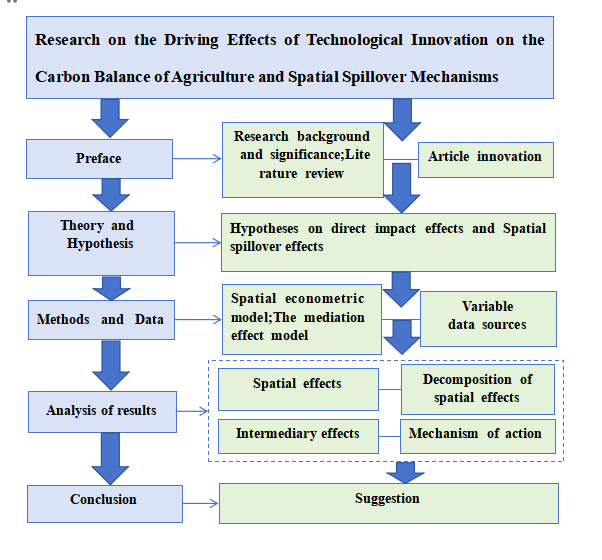
There is significant controversy over the overall effects of technological innovation on carbon balance. Based on panel data of agriculture from 28 provinces in China from 2009 to 2021, utilizing ArcGIS and spatial Durbin model, the spatial-temporal patterns of agricultural technological innovation and carbon balance are analyzed, and furtherly the spatial effects of technological innovation on carbon balance are examined. The results indicate: (1) the overall agricultural carbon surplus in Chinese provinces has been continuously increasing from 2009 to 2021; (2) the direct effect of technological innovation on the carbon surplus in agriculture is significantly positive, while the spatial spillover effect is significantly negative; (3) the mediating effect results show that technological innovation affects the output of the agricultural sector and thereby influences agricultural carbon balance; (4) the impact of technological innovation on agricultural carbon balance exhibits an asymmetric spatial spillover effect. Advantageous regions suffer from the positive effects of spatial spillover, while non-advantageous regions benefit from the negative impacts of spillover, resulting in an overall negative effect. This study's findings play an important role in addressing the existing controversy over the overall effects of technological innovation on carbon balance and provide important insights for formulating policies on low-carbon technological innovation in agriculture.
Total file downloads: 18